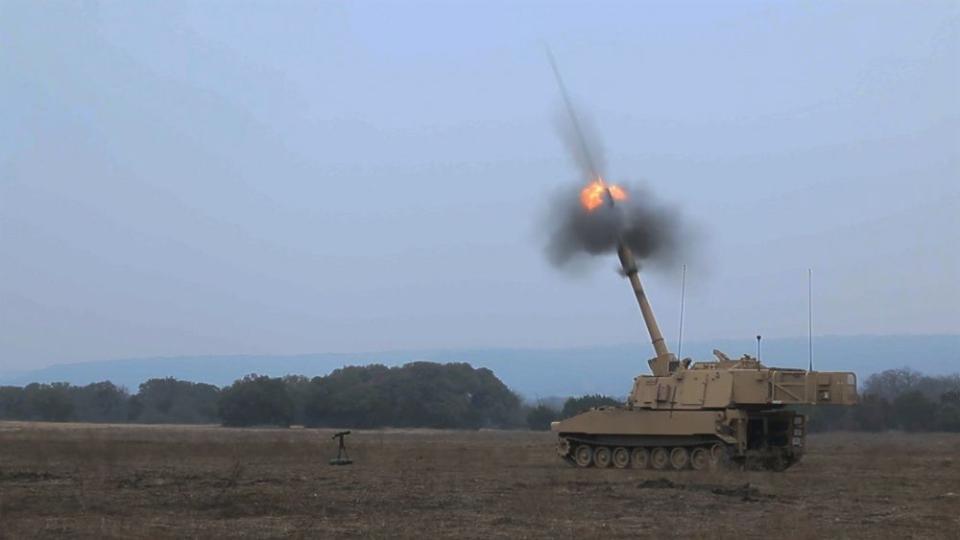Hauling Artillery Is Boring and Dangerous, so the Army Is Bringing In the Robots

One of the most dangerous—and boring—jobs in the U.S. Army is artillery resupply.
Instead, the Army wants to use robots to haul artillery shells across the battlefield, bringing fresh ammo to howitzer crews.
But if the process breaks down, soldiers can always step in and do some heavy lifting, the Army says.
Traditionally, one of the most unpleasant jobs in the military has been ammunition haulers. The task involves basically truck driving coupled with the excitement of moving shells designed to explode, causing maximum damage to everything around them. Now the U.S. Army could eliminate that job altogether while still getting front-line units the artillery shells they need—by giving the job to robots.
The concept, known as Field Artillery Autonomous Resupply, envisions convoys of robotic vehicles snaking their way across roads, trails, and rough terrain, shuttling loads of 155-millimeter artillery shells to frontline forces. These convoys would run from battalion supply areas—where food, ammunition, and medical supplies are stockpiled—out into the field to artillery units conducting fire missions.

Artillery guns like the M109A7 Paladin self-propelled howitzer can fire one round a minute, or up to four rounds a minute in emergencies. But with each shell being six inches in diameter, a Paladin can only hold 39 rounds at a time. A Paladin can burn through its onboard ammunition supply in just 10 minutes of sustained firing. Each Paladin is accompanied by a specialized vehicle carrying another 95 rounds, but at one round a minute the 155-millimeter howitzer will be totally out of ammunition in just over two hours.
That’s what makes artillery supply such a vital issue. The job has become even more dangerous and difficult in the modern era, as artillery units frequently relocate to avoid enemy “counterbattery” fire. An ammo convoy could set out from battalion to deliver fresh shells to a unit that might move twice before they’re finally located. The porous nature of the battlefield, in which such convoys might come under attack by armed guerrillas and improvised explosive devices buried in roads, makes driving around a truckload of explosive shells even less appealing.
The Army Applications Library, along with the Army Futures Command, is pushing the industry to come up with a robotic solution to the artillery resupply problem. They point out that the mission of resupplying frontline artillery units with shells really hasn’t changed for more than a century, while commercial logistics and supply chain practices look nearly unrecognizable 100 years later. If Amazon is working to use autonomous flying drones to make deliveries, why isn’t the Army using drones to deliver shells to the battlefield?

While the Army probably won’t use quadcopters to deliver shells any time soon—each M107 155-millimeter high explosive shell weighs 94 pounds—a low-profile, cabless truck would be perfect for the job. The truck would home in on a signal broadcast by the artillery unit, then use AI to plot a course using existing roads and trails, ideally taking into account reports of enemy activity to ensure the smoothest and safest possible ride. A convoy of such vehicles could use GPS to effectively space themselves out across a road, ensuring that a sudden air or artillery strike doesn’t take out the entire convoy.
Once at the artillery unit reaches its location, a robotic arm could lift shells out of their crates and into the storage racks located in the cab of the howitzer, sparing soldiers the need to lift heavy shells.
Soldiers aren’t off the hook yet thought: if something goes wrong with the robotic resupply process, the service explains, it “falls to the soldiers to provide manual labor and creative solutions."
According to the Army, six companies are participating in the project. The service is analyzing proposals from industry and will then allocate $150,000 to further develop ideas.
Source: Breaking Defense
You Might Also Like


